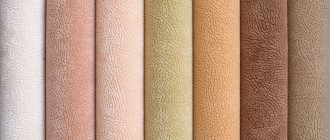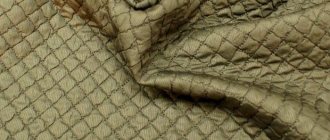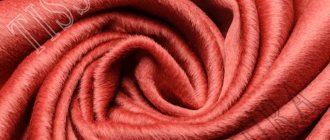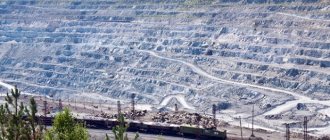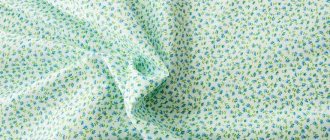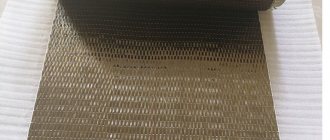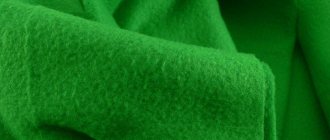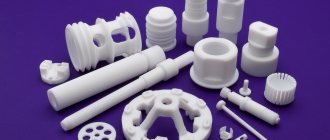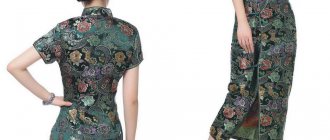Properties
In order to fully study the properties of aramid materials, you need to know how aramid thread differs from other fibers, what it is, and how you can improve the characteristics of the fabric itself.
Aramid fibers are threads that have a super-strong structure due to a special combination of atoms in the molecule. This provides the following properties that characterize aramid fabrics:
- high heat resistance - the fibers do not melt, the thread begins to break down only at temperatures above 500°C, but despite this, products made from aramid fabric can withstand short-term thermal shock of 1000°C;
- super strength - five times stronger than steel, withstands over 600 kg per sq. mm of tensile strength;
- lightness - two times lighter than fiberglass, the density of the canvas is 1500 kg/m3;
- biostability - does not absorb various odors, is not affected by bacteria and fungi.
Minuses
All the magical properties were noted earlier; the fabrics are unique and have made it possible to greatly facilitate and make human life safer. But, all good things must be compensated, even if they are minor, by minuses. Yes, the fabrics do not allow bullets to pass through, and they do not burn in fire, but they are still not without their disadvantages:
- Fabrics are very poorly dyed, for this reason, most products are yellow.
- The destructive effect of ultraviolet radiation - like most aromatic compounds, aramid is oxidized under the influence of sunlight, which leads to the destruction of the canvas.
- Some materials, when wet, slightly reduce their strength, which is restored when dry.
- High price. Such a unique material, obtained from expensive raw materials, also determines the high price of the product.
- The service life of products made from aramid fabrics is 10 years, but this fact should be attributed to positive characteristics rather than negative ones.
Types of material
Aramid fabric includes several varieties, the most famous of which are the following:
- Kevlar - the strength of this material directly depends on the duration of exposure to high temperatures. If Kevlar is exposed to high temperatures for about three days, its strength is reduced by half. At the same time, the canvas does not react in any way to short-term thermal influences.
- SVM differs from Kevlar in composition and is therefore characterized by high strength. Synthetic high-strength materials include Armos and Rusar. Thanks to the use of wet-dry thread spinning technology, it was possible to significantly improve the mechanical properties of the fabric.
- Twaron is a Japanese analogue of Kevlar, also produced in the Netherlands. Lightweight, elastic, does not deform, and is highly durable.
- Nomex is elastic, but less durable compared to other aramids. It is used to filter hot gases, for sewing workwear, in shipbuilding and aviation.
- Kermel - popular in France, used mainly in the military industry. Comfortable to wear, soft, pleasant to the body. The threads themselves are dyed, so the fabric retains its color well.
- Arcelon is an analogue of Russian-made Nomex, it is an excellent dielectric, lightweight and elastic, and is widely used for sewing workwear for welders, firefighters and metallurgical industry workers.
Properties of aramid fibers
Basic properties:
| Type | Density g/cm3 | Modulus of elasticity, GPa | Tensile strength, GPa | Elongation at break,% |
| High-modulus based on PFTA (Tvaron NM, Kevlar NM) | 1,45-1,47 | 140-150 | 2,7-4,5 | 2-3 |
| High-strength based on PFTA (Tvaron NT, Kevlar NT) | 1,45-1,47 | 130-140 | 2,7-4,5 | 2,5-3,5 |
| Heterocyclic, homopolymer, high modulus (HMW) | 1,45-1,46 | 130-160 | 4,0-4,5 | 2,5-4,5 |
| Heterocyclic, copolymer, high modulus (armos, rusar) | 1,45-1,46 | 140-160 | 4,5-5,5 | 3,0-3,5 |
| Parameta-aramid copolymer, high-strength (tekhnora) | 1,39-1,4 | — | 3,0-3,5 | — |
It should be noted that a distinctive feature and general disadvantage of aramids is low strength in the transversal (transverse) direction, since in this direction, the ropes have the least tensile strength and, therefore, resistance to compression and bending too.
In an attempt to increase intermolecular interaction and create the possibility of cross-linking, the M-5 material was obtained. M-5 threads have high compressive strength of 1.5 GPa, versus 0.35-0.45 GPa for PFTA-based aramids. But the complexity of the technology for producing M-5 complicates the development of industrial production.
Another disadvantage is the tendency to absorb moisture, which reduces mechanical strength.
Threads are subject to aging and a decrease in mechanical characteristics over time. It is also worth noting a decrease in performance when exposed to ultraviolet radiation.
High temperature resistance
Para-aromatic polymers have a high glass transition temperature. As a result, they have high heat resistance (resistance to high temperatures) and heat resistance (resistance to prolonged exposure to high temperatures).
An important feature when using these materials in extreme conditions is the absence of shrinkage up to temperatures of 350-450 °C. In addition to strength, some types of fibers are resistant to open flames.
I would appreciate any feedback. Thank you!
Areas of use
We can safely say that the fibers whose properties are described above are a fabric invulnerable to most negative factors. It is for this reason that aramid fabric is used in the following areas:
- Production of helmets, overalls, body armor
- Reinforcement of cables, tires, slings.
- Manufacturing of sports equipment, household appliances, musical instruments.
- Automotive industry, yacht and shipbuilding, fiber optic products.
- Sewing workwear for those who work in the petrochemical industry, as well as for workers whose activities are associated with the influence of high temperatures (firefighters, metallurgists, welders).
Certain types of materials
There are many varieties of aramid fabrics, differing in fiber structure, type of thread weaving, density, and additional properties. Let's look at the most common ones.
Kevlar
Aramid fibers are used to make workwear.
The first aramid fiber product was made in America in 1964. The developer is DuPont. The fabric was called Kevlar. The fibers were used to produce tires, body armor, wires, and helmets. Very durable work gloves were made from Kevlar, which could not be damaged. The fabric tolerates short-term thermal loads well. If Kevlar is heated continuously for a long time (more than 60 hours), then the thermal strength can be halved.
Tvaron
Twaron is made by Teijin Aramid, whose production facilities are located in the Netherlands and Japan. The quality of the fabric is similar to Kevlar. Light weight, high elasticity, strength, inertness to chemical reagents, dielectric and thermal stability make Tvaron unique.
SVM
In 1970, a synthetic high-strength material was produced in the USSR, which was called SVM. Subsequently, the idea was developed in Russia. A more advanced form of SVM is rusar and armos. A new modification of the technology has made it possible to increase the strength of fabrics. As the name indicates, they are used mainly for sewing clothes and military uniforms.
Nomex
The first meta-aramid fabric was Nomex, produced in 1961 in America by DuPont. It is elastic and can withstand high thermal loads. Nomex's strength is slightly lower than Kevlar, but its bending resistance is 3 times greater. Nomex chars at a temperature of 370°C, before this temperature value it does not melt. The fabric is used to sew special clothing that protects against high temperatures.
Arcelon
During the Soviet era in the 70s, production of the domestic analogue of Nomex, Arcelon, was launched in Belarus. Production still operates in Belarus today. The fibers can withstand long-term loads of 250°C, and short-term loads of 400°C. Arcelon is a lightweight, inert, elastic material from which clothing is made for firefighters, metallurgists, and welders. Arcelon is used to upholster the interiors of airplanes and railway cars.
Kermel
In the second half of the last century, aramid kermel fabric began to be produced in France. The material is soft, comfortable, pleasant on the body, durable and brightly colored. Kermel is used to make underwear knitwear and sew workwear for workers in hot industries.
Flaws
Despite the fact that aramid fabric is considered almost magical (it does not allow bullets to pass through and does not burn in fire), it also has a number of disadvantages, which include:
- poor dyeability - this is the reason why most aramid products have yellow fibers;
- sensitivity to ultraviolet radiation - cannot be used for long periods of time in direct sunlight;
- decrease in strength when wet - when a product made of aramid fabric dries, its properties are restored;
- high cost makes it impossible to widely use aramid.
It is also worth noting that products made from aramid fabrics are guaranteed for no more than 10 years. The service life of clothing can be increased by using special impregnations, but this requires additional costs.
Names of aramid materials (Arselon, Kevlar, Tvaron, Terlon, SVM, Nomex)
The main types of para-aramids are presented in the table.
| Name | Where is | Polymer |
| Kevlar | USA | PFTA |
| Tvaron | Holland | PFTA |
| Teknora | Japan | Parametasopolyamide |
| Rusar | RF | Terephthalyl chloride/paraphenylenediamine |
| Armos | RF | Heterocyclic diamine |
| SVM | RF | Terephthalyl chloride/heterocyclic diamine |
(PPTA ─ polyparaphenylene terephthalamide).
Let's look at the features of some aramid fabrics.
Kevlar
The first of the aramids. It is used in the production of helmets, body armor, equipment for sappers, work gloves, wires, tires.
Tvaron
Product of an international Japanese-Dutch company. Lightweight, high-strength, elastic, inert to chemical attack, does not allow electric current to pass through, and can withstand high temperatures.
SVM
Ultra-high-strength material (UHM), created by Soviet chemists. Its more advanced forms Armos and Rusar have been developed and are being produced in modern Russia. They are used to make uniforms for the military.
Nomex
Meta-isomer from DuPont. Elastic, heat-resistant, less durable than Kevlar, but 3 times more resistant to bending. Charring of the material begins at 370°C. Nomex is used to make workwear for those who work in high temperatures.
Arcelon
material aramid
aramid fiber what is it
aramid fabric suit
aramid clothing
An analogue of Nomex, produced in Soviet Belarus. It is still in production today. The material can withstand long-term heating up to 250°C, as well as short-term heating up to 400°C. Arcelon is used to make protective clothing for welders, metallurgists, and firefighters. The polymer is used for upholstery of carriages and aircraft cabins.
Terlon
A type of high-strength, fire-resistant fiber obtained in the USSR.
Kermel
Pleasant to the body aramid fabric made in France. Used for sewing underwear and workwear for hot shop workers.
Production and varieties of aramid fabrics
The fibers are obtained from solutions of aromatic polyamides. The process takes place in 3 stages.
- Polymer synthesis. Reagents are added to the solution and kept at a temperature of 5-10 ° C, stirring constantly. Aramid is released in the form of crumbs or gel. It is washed and dried.
- Molding of threads. Polymers are dissolved in concentrated acid and extruded through filters at a temperature of 50-100 ° C.
- Thermal exhaust. The formed fibers pass through the air gap and are sharply cooled in water to 4 ° C. After washing, the fibers are fed to a receiving device and dried.
There are several types of aramid fabrics. Each type has specific properties. Metaaramids (Nomex, Arcelon brands) are characterized by particular strength. Paraaramids (Kevlar, Tvaron, Terlon) are characterized by increased thermal protective properties. Orthoaramids (“Kermel”) are known for their softness and elasticity.
The interweaving of threads in fabric can be:
- twill,
- linen,
- satin,
- knitted,
- waffle
In the production of ballistic aramid fabrics, each layer uses a different type of weaving. This increases the strength characteristics of the material.
